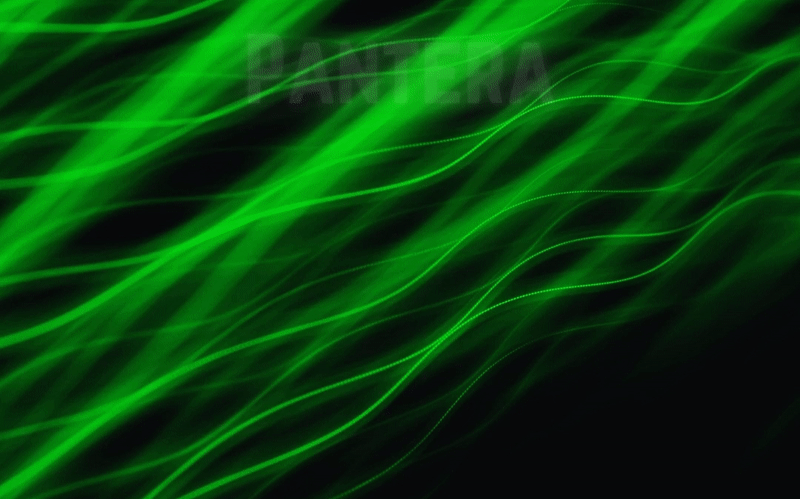Copyright Tips For Content Creators - What You Need To Avoid

Every content creator either a writer, blogger, YouTuber, or streamer should understand how copyright works, and avoid conflicts with the use of material protected by copyright.
Images we can use are those presented with a Creative Commons Licence specifically explaining which way we can reproduce this work, or images released in the public domain.
Images are the work of photographers or artists and this is also their source of income, protected with copyright the moment they are published online. At the end of the day, the available material to use in our work is quite limited but we can't use the work of others without permission, or under the guidlines of fair use.
Most YouTubers will risk using copyrighted material in their work without acquiring permission first. As they keep growing, eventually a copyright strike hits for previous work, and just as that, careers end.
With this article, we explore mostly from a writer's perspective the approach we should have with the use of images we find available online, when we proceed to use into written, video or live streaming content.

What We Can or Can't Use
Social media, YouTube, and almost all websites are suspending accounts for the use of copyrighted material.
For writers some of the websites we can find images we can use in our work are:
Wikipedia (strictly the public domain and CC-licensed images with attribution)
Using copyrighted images may damage our work, and create issues for the platform we are using.
Writers should look for material containing a license describing the use of such content.
The Pixabay licence for example explains in detail:


(Source)
With websites such as Pixabay and Unsplash, attribution is not even required. We can simply download any size of the image offered and use it with the above restrictions, that are reasonable enough.
However, some images come with a different license that may not allow commercial use or may demand attribution. Any time we download an image and use it for our blogging/writing work, we should study the license and use these images properly.
Besides fair use, whenever we find an image we may want to use but we are not sure if it is copyright protected or not, then probably it is. Content creators usually ask for permission to use copyrighted content. When this is about YouTubers, for example, they will certainly have issues when using copyrighted material without written permission is used.
For writers, it is the same, but the trouble we can get into depends to the traffic we generate. Still, corporations are scanning the entire internet looking for copyright infringement and requesting platforms to take down such content. Usually, websites react by also suspending the account of the suspected user.
In legal terms, copyright concerns the justice system and punishes the violators, depending on the laws of each jurisdiction.
Sometimes, fair use is abused as a term, and often will not be accepted in courts as a valid ground. There is also confusion and different decisions have been taken by courts when the infringement involves lower quality material. Consider everything unlicenced to be copyright protected, though and proceed with caution.

Fair Use
Fair use is a legal doctrine that promotes freedom of expression by permitting the unlicensed use of copyright-protected works in certain circumstances.
Source (US gov website)
I'm using images with Creative Commons license or public domain pictures in my work, and only on a rare occasion I may use part of a whole image or screenshot, in terms that constitute fair use, however, I'm trying to avoid this as well.
In particular, academic, non-profit, and highly transformative uses (that is, uses which supersede the original use of the work) are likely to be considered fair.
Copyright protects creativity, not the representation of facts in an image. However, content creators will often find themselves in trouble, since copyright holders will often accuse them of copyright violations even when fair use is illustrated.
On the other hand, we have lately a phenomenon of Twitch streamers watching whole TV series and just presenting their reaction to the video as they watch the content. while also presenting the video to be viewable by their audience. This is not creativity, especially since they profit from creating nothing. It constitutes copyright infringement and the copyright holders can proceed with legal action against them.
What's going to happen if you stream the latest Matrix movie on the internet and just provide your reactions? There is no fair use there, and streamers are profiting and monetizing their content.
The same applies to Youtube or any form of videos, this is why you will rarely see the top streamers watching videos for a long time.
Playing copyrighted music in the background is also violating the copyright, and we all remember how much supportive of copyright Lars Ulrich was back in the Napster days. It would be wise not to listen to Metallica when live-streaming games on Twitch.

Piracy

(source)
Piracy is totally different subject that would be covered perhaps in another article.
Piracy is about profiting from work of others, however, the P2P torrent file transfer networks were clearly about something different.
Spreading art in all forms is important and the freedom the torrents wave created was unparallel. While some artists were claiming this kind of industry was creating losses to them, in fact, it was a decisive factor for increasing their fanbase instead.
However, this is different from content creation. It is about reproduction of information at no cost, making it available to everyone.
I'm not in favor of copying original work and been sold in the streets in the form of CDs or DVDs, this is not what I support when discussing freedom of information.
Since a young age I supported in multiple ways artists that I've enjoyed listening their music, watching their films, playing their games.
P2P file-sharing was a wave of freedom. One that helped artists since it made their art available to billions of people instead of just those that could afford it. It didn't reduce the income of any artist either, but advertised their work and opened new opportunities to them. Sadly, some didn't notice this part, and driven by pure greed, felt they were losing millions this way.

YouTube Screenshots And Embedded Videos

(source)
Specifically for YouTube, screenshots or parts of the videos, are not allowed to be used by other content creators.
By embedding a YouTube video inside a blog or an article, the platform doesn't host the video but generates traffic for YouTube and the content creator instead.
The video is not hosted by the platform we use but connects to YouTube servers, it is like watching it on YouTube and the views also are added for the content creator.
Read.cash and other platforms allow this connection to YouTube and we can embed videos from YouTube or other supported platforms without any issue.
However, we can't take a screenshot or a photograph of copyrighted material and upload it on any website or social media, without the written permission of the copyright owner.
Our website will host the images we capture from a video clip or other copyrighted material and not the YouTube servers.
The legal difference is we upload them on another server. Images can’t be embedded (to my knowledge), just the video source can.
Finally, copyrighted material doesn’t require mentioning it is such. A website doesn’t require having a copyright notice, yet most have it per tradition.
It is all copyrighted the moment the material is posted online. A website is also copyrighted. Under certain conditions, some parts, such as screenshots, can be used (fair use), but it is not recommended.
From my research, the copyrighted material belonging to major entertainment corporations is strictly forbidden to use. Images, screenshots, or pictures from movies are not allowed to use, and there are certain procedures for reviewers to acquire permission.

Charts

(Source: Google)
The above images are graphs, and the appearance of those graphs is dictated by the data which the graphs represent. As such, they do not merit copyright protection.
While the creators of the graphs did have some creative control over the type of graph they chose, the colors they used to represent data, etc., those choices only served to represent the underlying data.
Source: University of Michigan
Charts are not copyrighted by default unless they possess artistic or creative features.
This is specifically explained in almost all jurisdictions. The chart by itself is simple lines and numbers representing an event or measurements that already exist. It does not constitute content creation since it does not represent thoughts or expression of an artist, but a simple arithmetic depiction of events that occur.
A chart representing the price of BTC does not receive copyright protection.
However, if this chart is presented with certain effects, and not in a simple approach, but in an approach of an infographic presenting a creative touch that enhances the image further from just being a chart, then copyright applies.
In general, we can use simple charts from any source, but not those charts that present creativity or artistic approach.

The above representations of molecules, (propane and glucose, respectively), are also not subject to copyright protection. A molecule exists in a predetermined state, and a representation of this state will be dictated by that underlying fact, and is therefore not subject to copyright protection.
Not everything is or can be copyright protected.

Gaming and Live Streaming (Twitch, YouTube, etc.)
In Twitch, streamers are playing games and profiting from it. This is their job, and they are allowed to do so since it helps the gaming industry. The gaming industry though is divided into two different groups concerning streaming, so bear in mind these details if you plan to become a professional streamer:
Copyright in gaming is subjective to the policy or agreements between the user and the game developer.
Companies like Sony and Microsoft encourage gamers to share their games.
However, Nintendo, China NetEase and League of Legends have followed a strict copyright policy claiming that the distribution of the game contents should be authorized by the copyright owner and any unauthorized live streaming can make the broadcaster or the streamer liable for copyright infringement.
It is clear that live-streaming a game is a copyright violation.
However, some gaming corporations allow and encourage live-streaming of their games, while others demand authorization first.
As writers, we are not allowed to use screenshots or images from a game. Perhaps a gaming company wouldn't mind a favorable review, but it is better perhaps to contact the gaming company and ask for permission.
Content creators may risk their accounts when using in-game videos for their YouTube channels, and they should understand the risk.

In Conclusion

(source)
This is how copyright works (more or less).
I don’t like it either, especially since fair use of copyrighted material is not covered with certainty. Fair use has a different meaning each time and derives from the total of the content we present.
While it should be “fair use” to review a copyrighted product (image, website, game, video), usually this is a thin line we are crossing and the copyright owner can proceed with various actions against us.
Because there is always uncertainty, I’ve added a disclaimer at the bottom of my posts, and just in case any copyright owner has an issue, they may email me and present their case.
As writers, we are limited to using only what is available in the public domain or with the various licenses that exist.
This is just a limited part of the content on the internet and we are often struggling even to find a relative lead image for our work.
We can reproduce simple and non-creative text or charts since they are not copyrighted-protected. However, there is always a thin line we may cross, and we should consider we can’t reproduce the creative work of others.
Feel free to use quotes always with a link to the original and to an extent that doesn’t cover most of our writeup (I think this is self-evident).

Cover Photo: by Chris Spiegl on Unsplash (modified)
DISCLAIMER: All material published in this content, is used for entertainment and educational purposes and falls within the guidelines of fair use. No copyright infringement intended.
If you are, or represent, the copyright owner of material used in this article, and have an issue with the use of said material, please send an email.
No financial advice intended.
Follow me on:
● ReadCash ● NoiseCash ● Medium ● Hive ● Steemit ●Vocal ● Minds ● Twitter ● LinkedIn ●Reddit ● email

(background image from Pixabay)
Don't forget to Subscribe and Like if you enjoyed this article!
















I understand this article thank you for all the info.